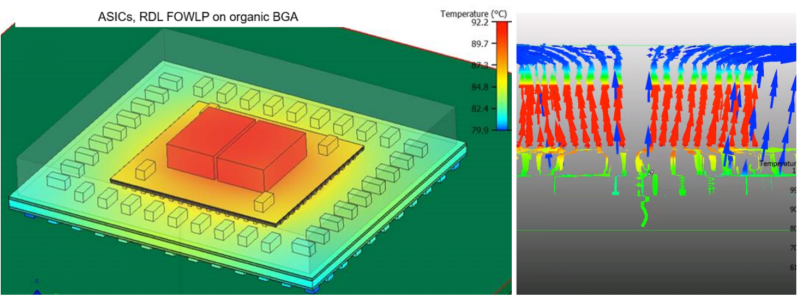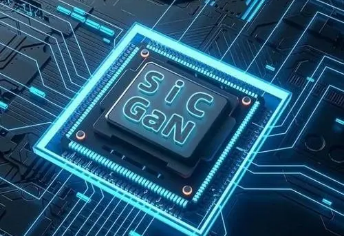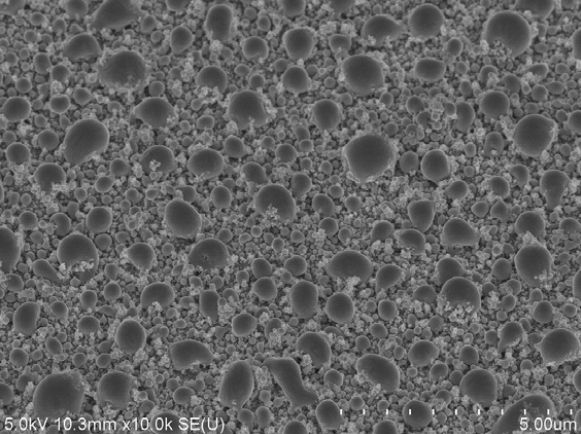Molding process and technology development trend of special ceramics
In recent years, the application of special ceramic materials in the field of high-tech in China is endless, because of its high temperature resistance, wear resistance, corrosion resistance, high hardness, high precision and other advantages that metals and plastics do not have, and in the fields of electronics, superconductivity, optics, biology, magnetism, energy storage and so on, become the "material black gold" in the upstream of many high-tech industrial chain.
At the same time, the high-tech field has high requirements for the shape and dimensional accuracy of special ceramics. In order to obtain high-performance special ceramics, to achieve precision molding of complex shaped parts, and to reduce the preparation and processing costs of materials, the preparation of special ceramics has become an important topic in its development.
Forming methods and characteristics of special ceramics
Ceramic molding is the ceramic raw materials in accordance with the actual production requirements into a specified shape, size and a certain strength of the green, the molding process depends on the performance of ceramic raw materials and molding process. There are a variety of methods to create the shape of ceramic products, but in general, it can be divided into dry molding and wet molding. Dry forming includes dry pressing, isostatic pressing, ultra-high pressure forming, powder electromagnetic forming and so on. Wet molding includes extrusion molding, injection molding, rolling film molding (calendering molding), grouting molding, injection molding, casting molding, direct solidification molding, colloidal vibration injection molding, etc.
(1) Dry pressing
Dry press molding is to add a certain amount of organic additives (binder, lubricant, plasticizer, defoamer, water reducer, etc.) to the ceramic powder, and make it formed in the mold under the action of external pressure. Dry pressing forming method is easy to realize automation, so it has been widely used in industrial production. However, in the forming process, the stratification of the billet is often caused by the uneven distribution of radial and axial pressure, and the phenomenon of cracking and density inequality often occurs.
(2) Isostatic pressing
Isostatic pressing is a method by which the powder is compressed while forming by applying various isostatic pressures. According to the different forming temperature, isostatic pressing is divided into hot isostatic pressing and cold isostatic pressing. Cold isostatic pressing is the isostatic pressing method of forming the workpiece at room temperature. Hot isostatic pressing refers to the isostatic pressing method of sintering the workpiece under high temperature and high pressure.
(3)Ultra-high pressure molding
Ultra-high pressure molding is a rapidly developing molding method, which is mostly used in the molding of nano-ceramics. The particle size of nano-ceramics is greatly affected by sintering temperature, the lower the sintering temperature, the smaller the particle size, the easier to obtain nano-ceramics. By increasing the forming pressure and increasing the initial density of the blank, the sintering temperature of nano-ceramics can be reduced, so the ultra-high pressure forming came into being. Ultrahigh pressure molding obviously changes the sintering properties of the blank, so it is easier to obtain nano-ceramics.
(4) Powder electromagnetic forming
Powder electromagnetic pressing is a new high-efficiency molding process that uses strong pulsed electromagnetic forces to densify the powder body. This method is usually used for the molding of metal materials, and very high density can be obtained. The density of the samples formed by powder electromagnetic pressing method is more than 95%, which has good piezoelectric and dielectric properties.
(5)Extrusion molding
The powder, adhesive, lubricant, etc. are evenly mixed with water and fully mixed, and then the piston is pushed by the hydraulic press to extrude the plasticized billet from the extrusion nozzle. Due to the gradual reduction of the inner shape of the extrusion nozzle, the piston exerts great extrusion pressure on the mud mass, so that the blank is dense and formed.
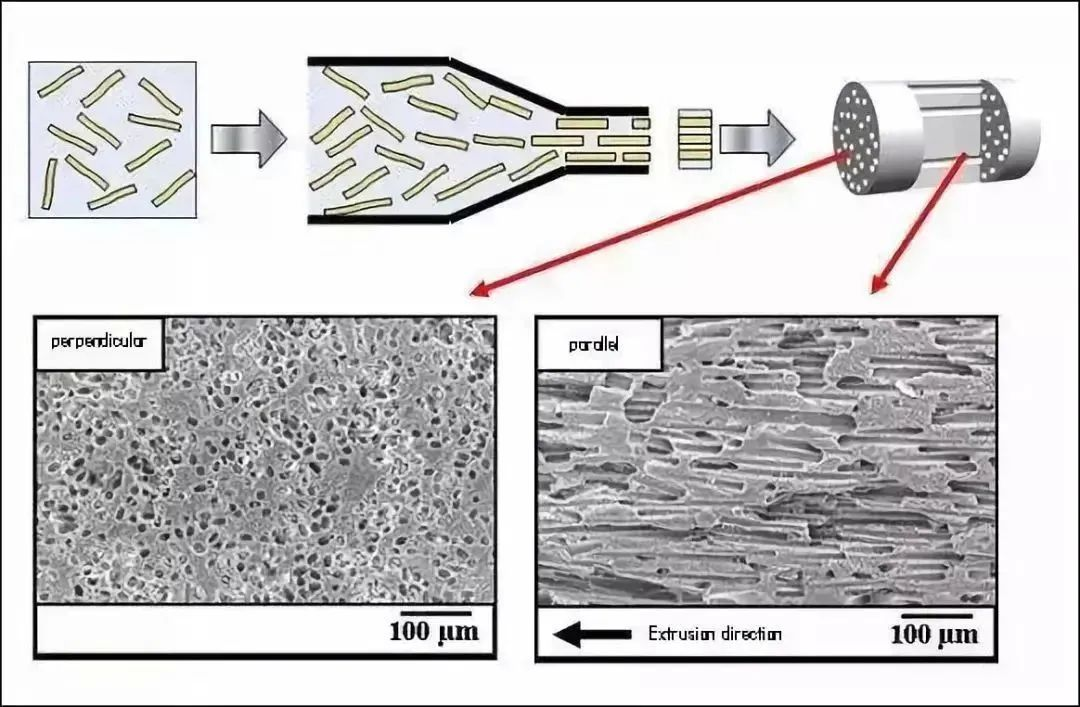
(6)Injection molding
Injection molding is also known as hot die casting molding, the technology by adding a certain amount of polymer and additive components and slightly hot, giving metal powder, ceramic powder and polymer similar fluidity, under pressure the slurry filled with metal mold, cooling after the billet to obtain billets. It is listed as an important "national key technology" by developed countries such as the United States.
(7) Calendaring molding
Powder, additive and water are uniformly mixed to make plastic material, and then the material is rolled by two opposite rotating rollers, so as to become the forming method of sheet blank. The billet obtained by rolling film forming has high density and is suitable for the forming of sheet and plate shaped objects.
·
(8) Slip Casting
The grouting molding method is to inject the prepared mud into the gypsum model, because the gypsum model has air permeability and water absorption properties, after the mud contact model, the water in the mud will gradually be sucked into the model wall, and the fine particles in the mud will be evenly arranged with the shape of the model into a thick mud layer, when the thick mud layer reaches the expected thickness, Excess mud can be poured out of the model. After the moisture in the thick clay layer is absorbed by the model to reach independent molding, the billet can be taken out and dried for repair.
(9) Centrifugal grouting molding
Centrifugal grouting molding is developed on the basis of traditional grouting molding. By adjusting the pH value and other process parameters, the powder is evenly dispersed in the liquid and deposited under the action of centrifugal force of high-speed rotation. Centrifugal grouting is a combination of wet chemical powder preparation and stress-free densification technology, which can prevent powder agglomeration and other defects on the one hand. On the other hand, the purpose of deposition can be achieved by the different particle size and speed of the powder, which can be used for the preparation of multilayer and gradient composite functional materials.
(10) Electrophoretic deposition molding
Electrophoretic deposition molding is the use of direct current electric field to promote the migration of charged particles, and then deposited on the opposite polarity electrode and molding. Electrophoretic deposition is simple, flexible and reliable, so it is suitable for the forming of multi-layer ceramic capacitors, sensors and gradient functional ceramics, but it is sensitive to the change of process parameters.
(11) Gel injection molding
By adding vinyl organic monomer into the suspension medium, the organic monomer is crosslinked through free radical reaction by using catalyst and initiator, and the billet realizes in-situ curing. The billet prepared by this method has high strength and is easy to be machined. However, the shrinkage rate of the compact body is relatively large, resulting in bending deformation of the compact body, and the organic monomer used is toxic, and the reaction atmosphere is not easy to control.
(12) Fluidized casting
Casting molding refers to adding solvent, dispersant, binder, plasticizer and other components in ceramic powder to get a uniform and stable slurry, and make the required thickness film on the casting machine. The requirements of casting molding equipment are relatively simple: continuous operation, high production efficiency, high automation level, stable process, uniform performance of billet..etc
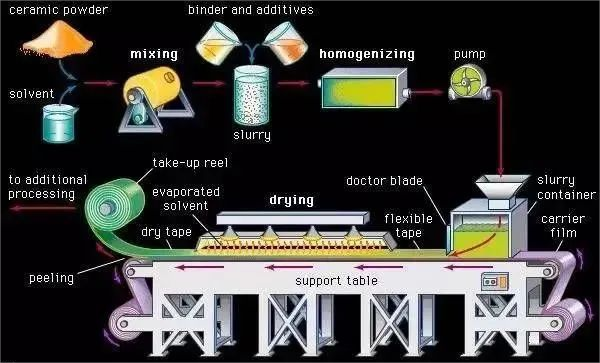
(13) Direct solidification forming
Direct solidification forming is a new concept of net size in situ ceramic forming technology. There is no need or only a small amount of organic additives (less than 1wt%), the body does not need to be degreased, the body density is uniform, the relative density is high, and the ceramic parts of large size and complex shape can be formed. But the strength of the body is often not high enough.
(14) Colloidal vibration injection molding
Colloidal vibration injection molding is to obtain billets with high solid phase content from the prepared dilute suspension (20% ~ 30%(vol)) containing high ionic strength by pressing or centrifuging, and then pour under the action of vibration to achieve in-situ solidification. Colloidal vibration injection molding enables continuous production and can form ceramic parts with complex shapes. However, the strength of the blank is low, and the blank body is easy to crack and deform during mold release.
(15) Temperature induced flocculation molding
Temperature induced flocculation molding is a net size colloidal molding method. DCC and colloidal vibration injection molding make use of the static stability of colloids and this method takes advantage of the spatial (steric) stability of colloids. The unqualified body after demoulding can be reused as a raw material and can be used to form almost all ceramic powder systems.
(16) Solid mouldless forming
Solid formless molding technology breaks through the limitation of traditional molding ideas and is a molding method based on "growth". In the field of ceramics, the solid molding process can be divided into: laser selective sintering molding, three-dimensional printing molding, melt deposition molding, layered manufacturing molding, stereolithography molding, etc. It has the characteristics of high flexibility, high integration of technology, rapidity and free forming manufacturing. At the same time, there are also problems such as high equipment prices, software development, material development, molding accuracy and quality.
The development direction of special ceramic forming technology
In general, the development of dry forming technology such as steel die pressing and isostatic pressing is earlier, with high technical maturity and high degree of automation, which is the main method of special ceramic forming at present, but due to poor precise size control, its application in high-performance fine ceramic forming is limited. The colloidal molding method represented by injection molding and casting molding is a new technology in wet molding, which not only has the advantages of low cost, but also has a high degree of automation, and can achieve scale production, representing the development direction of special ceramic molding methods.
In the future, the future development of special ceramic molding technology will focus on the following aspects:
● Further develop the application of various non-die forming technologies that have been proposed in the preparation of different ceramic materials;
● The design of more complex structural layers and the interweaving, interweaving, connecting structure and composition of three-dimensional changes within the layer;
● Structural design and manufacturing of large shaped parts;
● Manufacture and practical application of ceramic microstructure;
● Further development of new technologies that are pollution-free and environmentally compatible.
Fountyl Technologies PTE Ltd, is focusing on semiconductor manufacturing industry, main products include: Pin chuck, porous ceramic chuck, ceramic end effector, ceramic square beam, ceramic spindle, welcome to contact and negotiation!




